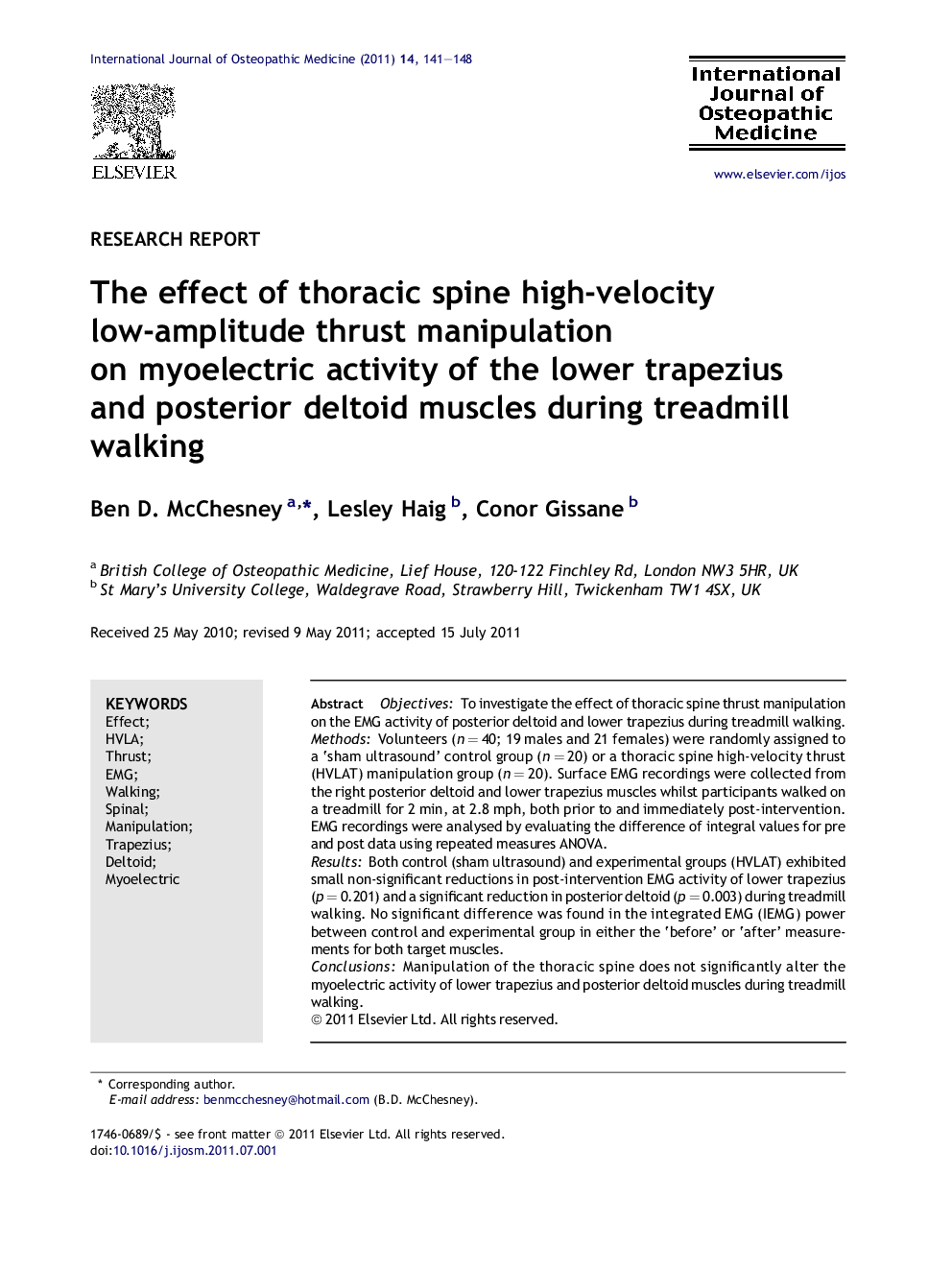| کد مقاله | کد نشریه | سال انتشار | مقاله انگلیسی | نسخه تمام متن |
|---|---|---|---|---|
| 2618748 | 1563006 | 2011 | 8 صفحه PDF | دانلود رایگان |

ObjectivesTo investigate the effect of thoracic spine thrust manipulation on the EMG activity of posterior deltoid and lower trapezius during treadmill walking.MethodsVolunteers (n = 40; 19 males and 21 females) were randomly assigned to a ‘sham ultrasound’ control group (n = 20) or a thoracic spine high-velocity thrust (HVLAT) manipulation group (n = 20). Surface EMG recordings were collected from the right posterior deltoid and lower trapezius muscles whilst participants walked on a treadmill for 2 min, at 2.8 mph, both prior to and immediately post-intervention. EMG recordings were analysed by evaluating the difference of integral values for pre and post data using repeated measures ANOVA.ResultsBoth control (sham ultrasound) and experimental groups (HVLAT) exhibited small non-significant reductions in post-intervention EMG activity of lower trapezius (p = 0.201) and a significant reduction in posterior deltoid (p = 0.003) during treadmill walking. No significant difference was found in the integrated EMG (IEMG) power between control and experimental group in either the ‘before’ or ‘after’ measurements for both target muscles.ConclusionsManipulation of the thoracic spine does not significantly alter the myoelectric activity of lower trapezius and posterior deltoid muscles during treadmill walking.
► This study investigated the effect of High Velocity Low Amplitude thrust technique (in thoracic spine) on the posterior deltoid and lower trapezius muscles during treadmill walking.
► Subjects had 2 minute recordings of target muscle EMG activity during treadmill walking before and after control (sham ultrasound) or experimental (HVLAT) interventions.
► No significant difference was found between groups, indicating that HVLAT had no effect on the target muscle EMG activity during this functional task.
► Further study examining different functional tasks within a similar experimental model is warranted.
Journal: International Journal of Osteopathic Medicine - Volume 14, Issue 4, December 2011, Pages 141–148